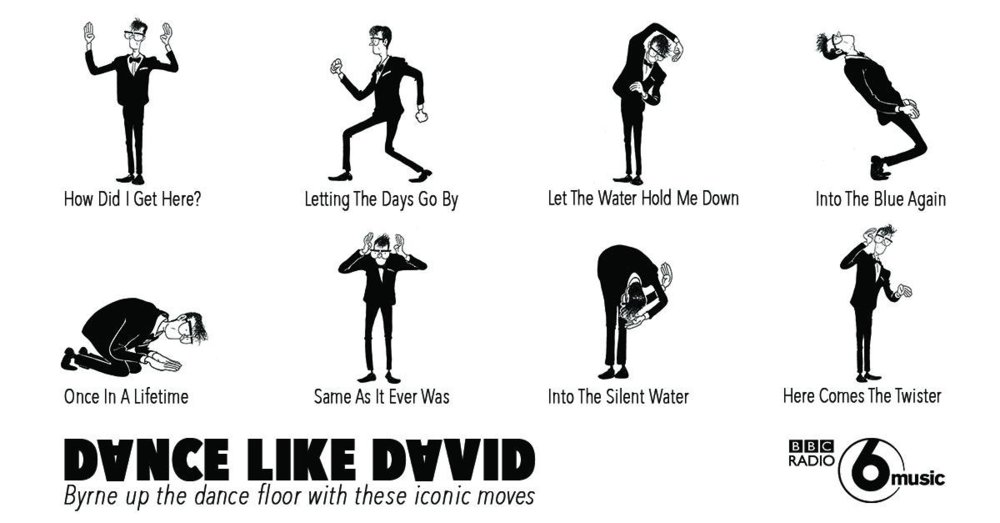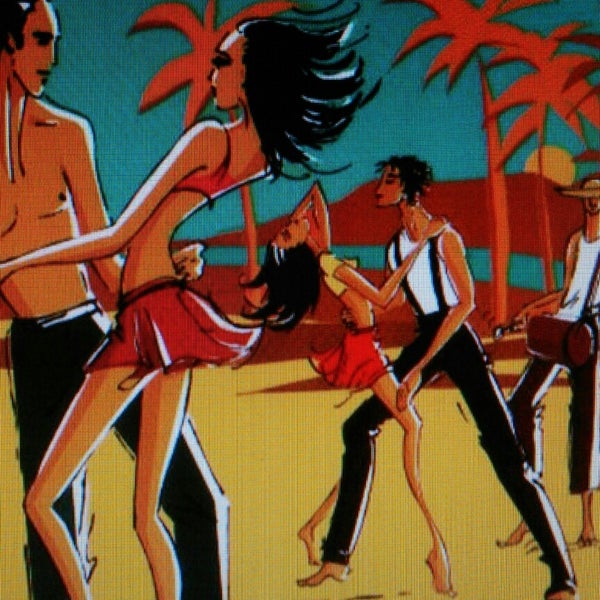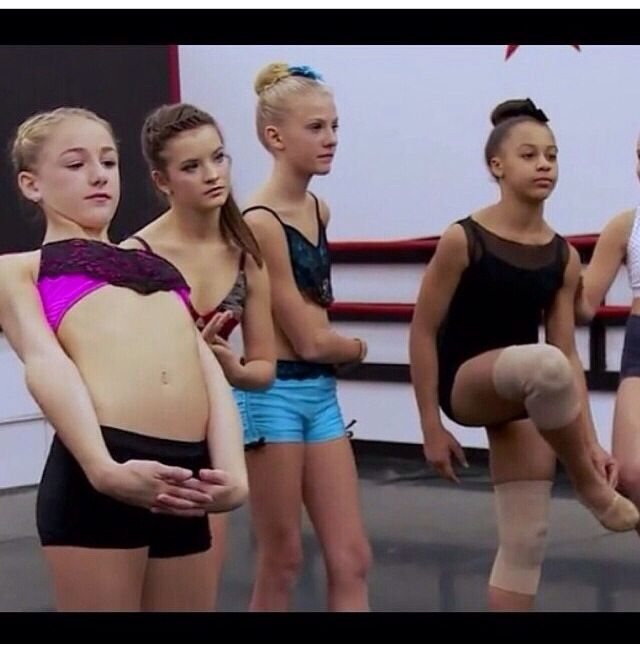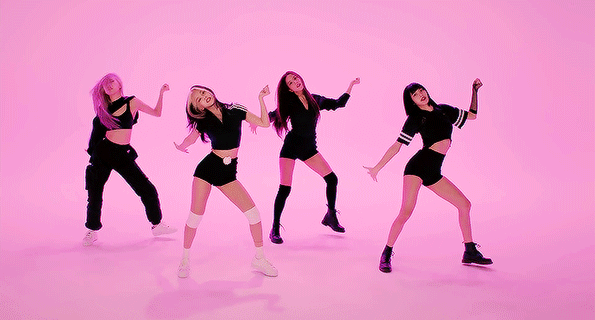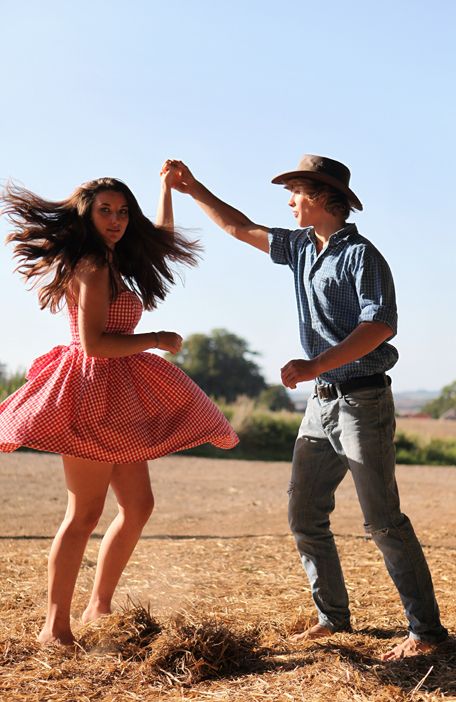How should ballroom dance shoes fit
Fitting My Dance Shoes – Ballroom Connection
Fitting My Dance ShoesBallroom dance shoes are no different from footwear equipment in other sports and dance disciplines like ballet, rock-climbing, bowling, etc. Therefore, it is very important that we size and fit our dance shoes correctly.
Generally, we wear our street shoes slightly larger to have some room to be comfortable, which is perfectly acceptable for everyday wear. Since we want our ballroom shoes to be more fitted all around, it is common for us to size down in dance shoes. There is no exact conversion, since we all wear our street shoes differently, but here is a general guideline:
Closed-toe styles:
- If you wear street shoes with little or no extra room, you can try the same size in most closed-toe styles
- If you prefer a bit extra room in your street shoes, it may be recommended to try a half size smaller in dance shoes to get the correct fit.
Open-toe styles:
- Open-toe dance shoes are meant to be worn shorter than what we would look for in street shoes, so it is recommended to try about a half size smaller for open-toe styles.
- Since how we prefer our street shoes varies between different people, please keep in mind that some may need to size down more to achieve the correct fit in length.
**Note: A half size corresponds to about ¼ inch in length. Width of shoes are always proportional to the size.
The #1 mistake new ballroom dancers make is to size their dance shoes as though they were ordinary street shoes. Ballroom shoes may look similar to an ordinary shoe, but they are constructed very differently and are meant to be fitted in a specific way to allow us to perform the correct foot action.
It is normal for dance shoes to feel a bit tighter than what we are used to. Please give yourself some time using them and engaging in the activity to adjust to the fit and to allow for the shoes to break-in and form to our feet.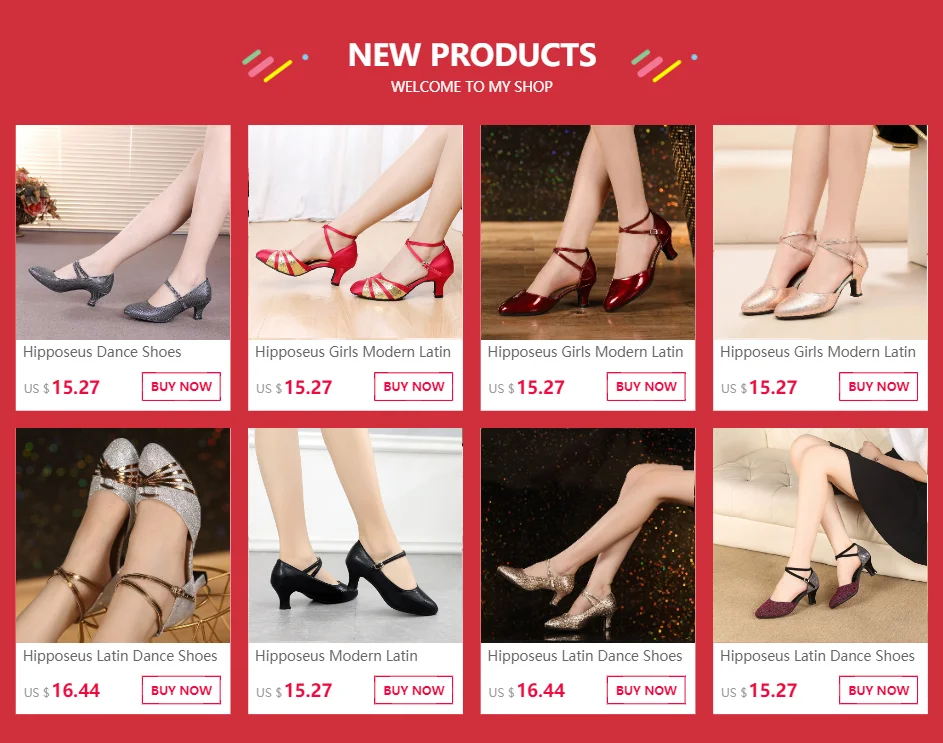
Ballroom shoes of any style should be worn with a snug, glove-like fit in width and length. We wear our ballroom shoes slightly shorter in length and more fitted in width than we would ordinary street shoes.
- We want to comfortably fill out the shoe as much as possible. Dance shoes are much softer and will stretch and give over time through usage.
- We don’t want excess toe or heel room. Very little to no space in the shoe is ideal (think how gloves are fit on our hands). This is important so that once the shoes stretch out, there isn’t extra room to slip around inside the shoes as we dance.
- Ideal fit: In softer shoes, a more snug fit will give us more control. The shoes should feel like a part of the foot, like a second skin.
- Poor fit: A looser fit in softer shoes will be too roomy and feel sloppy. We don’t recommend this because you run the risk of over-working muscles in your feet to compensate or even injury.
What is an ideal fit:
- Toes reach close to or at the end of the shoe with no excess space.
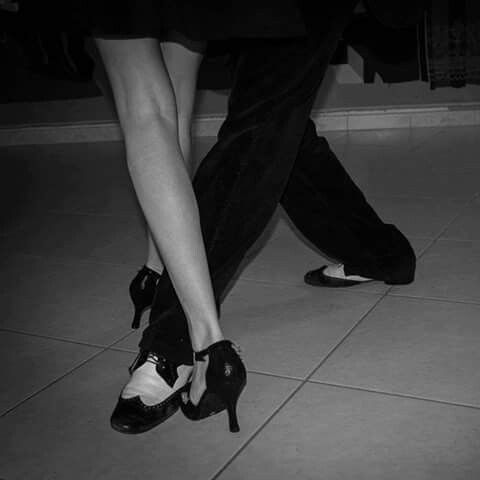
- In an open-toe style, we want our toes to reach the end or come a bit over the front edge of the shoe.
This is important for Latin style dances, where technique involves pointing the feet. We do not want the lip of the shoe to be too long, which may catch the floor or impede in proper foot actions.
- Heels sit in the heel cup without gapping or excess room. Front of shoe (width) hugs as much of the foot as possible without gapping or excess room.
What is a poor fit:
- Extra toe room may result in a “sloppy” fit and can get in the way of completing our foot actions.
- Extra heel space means the heel cup does not hold our foot into the shoe and may result in instability or slippage, or unwanted rubbing, which can cause blistering.
A roomy, unstable fit can cause injury! Shoes that are too wide and roomy don’t hold our feet well enough. This causes us to overwork our feet against the shoe due to a lack of support.
This causes us to overwork our feet against the shoe due to a lack of support.
**Note: Please use your best judgement based on these guidelines to find your best fit. We DO NOT recommend or encourage a fit that hurts or causes extreme discomfort. Please be aware that dance shoes will feel different from what we are used to in street shoes and will often take a period of adjustment, but they should not hurt you.
So what style should I look for?
The appearance of the dance shoe is less about fashion and more about the type of dance. Here is a very general guideline to the differences in dance shoe styles:
Open-toe VS Closed-toe
- Closed-toe styles:
- Offers more support and is more structured than open-toe styles
- More support makes them ideal for proper technique in American Smooth and International Standard style dances
- Open-toe styles:
- Offers more flexibility and range of motion than closed-toe styles
- More flexibility makes them ideal for proper technique in American Rhythm and International Standard style dances
- Salsa, Bachata, Merengue, and various Swing style dances often fall under a similar family of dances; if more flexibility is desired, open-toe is recommended
Solid front VS Strappy front
- Solid front styles:
- More material covering our feet provides more support and protection
- Extra support often means slightly less flexibility
- Strappy front styles:
- Less material covering our feet makes the shoes faster to break in
- Strappier styles offer more flexibility and range of movement and articulation
Low heel VS high heel
- Low-heel styles:
- Offers more stability and is easier to balance in
- Great for practicing in or if you have injuries or weaker muscles and joints
- Lower heels will shift more balance away from the balls of feet
– We generally want to be more on the balls of our feet when partner dancing to avoid being too “back-weighted”
– But lower heels will relieve some pressure from the balls of the feet if dancers are struggling
- High-heel styles:
- Higher heels put our balance more towards the ball of the foot which is ideal for Latin and Rhythm style dances (or other similar styles)
- Higher heels also aid in proper posture for correct “Cuban motion” technique
Split-sole VS Full-sole
- Split-soles:
- Has a shorter shank to allow for more flexibility in the shoe
- Easier to point our feet for proper Latin/Rhythm style dance technique
- Full-soles:
- Has a longer shank, which gives shoes more structure and support
- Less flexibility, but will help better-maintain balance and stability
Differences between the buckle types?
There are a variety of different types of buckles and closures used across many different dance shoe styles.
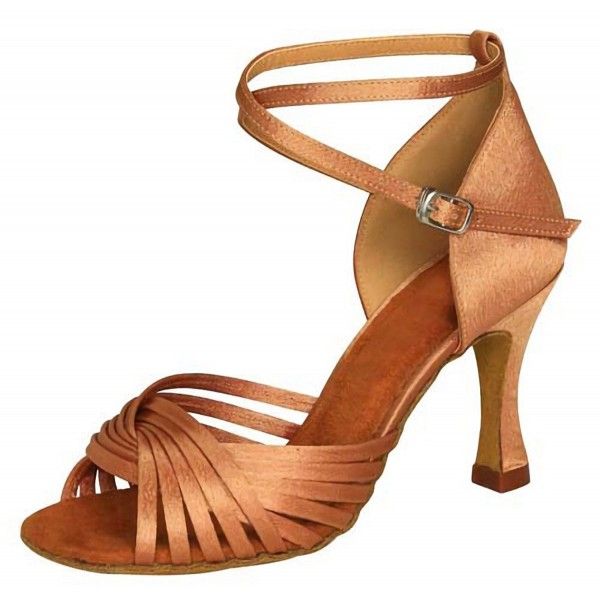 Which kinds are used typically depends on the choice of the shoe brand. For example, all of the Supadance brand shoes will feature quick-release style buckles, while others like Ray Rose will use traditional style buckles. Since the methods of adjustment and fixing and undoing each type of closure is different, it may be worth noting what kinds your dance shoes will use. However, no matter which kind, they all serve the same purpose of keeping the shoe straps secured around the foot while dancing.
Which kinds are used typically depends on the choice of the shoe brand. For example, all of the Supadance brand shoes will feature quick-release style buckles, while others like Ray Rose will use traditional style buckles. Since the methods of adjustment and fixing and undoing each type of closure is different, it may be worth noting what kinds your dance shoes will use. However, no matter which kind, they all serve the same purpose of keeping the shoe straps secured around the foot while dancing. - Traditional buckle:
- Simple and classic buckle style; these are familiar to everyone, but often takes a bit more time to do and undo
- Quick-release buckle:
- Allows for quicker clasping and unclasping for faster changes in and out of shoes
- May take a bit of time to get used to for those unfamiliar, but just keep practicing!
- Tips: after you find your correct hole setting, there is no need to ever undo the buckle from the strap again unless an adjustment needs to be made.
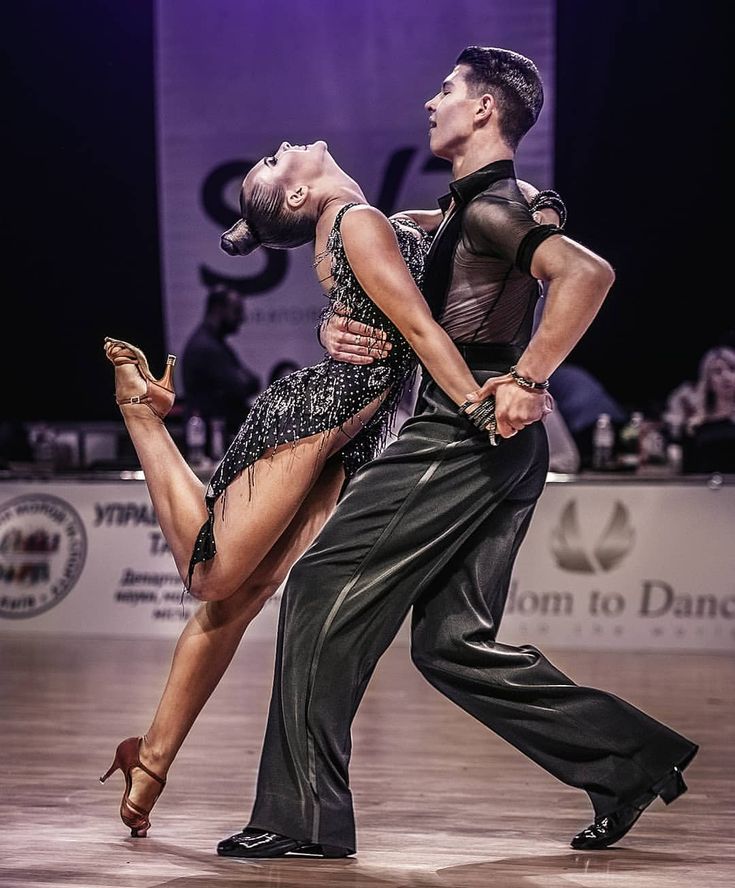 It’s advised to keep the buckle on the strap, since it’s easy to lose if left undone or removed.
It’s advised to keep the buckle on the strap, since it’s easy to lose if left undone or removed.
- Snap button buckles:
- A variation of the quick-release for easy on and off
- Allows for full customized adjustments without a need for hole settings to be punched in
- Tips: Adjusting the buckle to the right spot on the strap might be tricky at first! It might be easier to undo the entire strap from the buckle, slide it to the right spot, then slide the strap back through.
- Like the quick-release buckle, there is no need to ever undo the buckle from the strap again unless an adjustment needs to be made.
Differences between the strap styles?
There are many different straps used in dance shoe styles. Some of the most common types are the arch strap, the T-strap, or a basic ankle strap. Generally, the way the strap looks is completely an aesthetic choice, and all of them will do the job of securing the shoes to our feet while dancing.
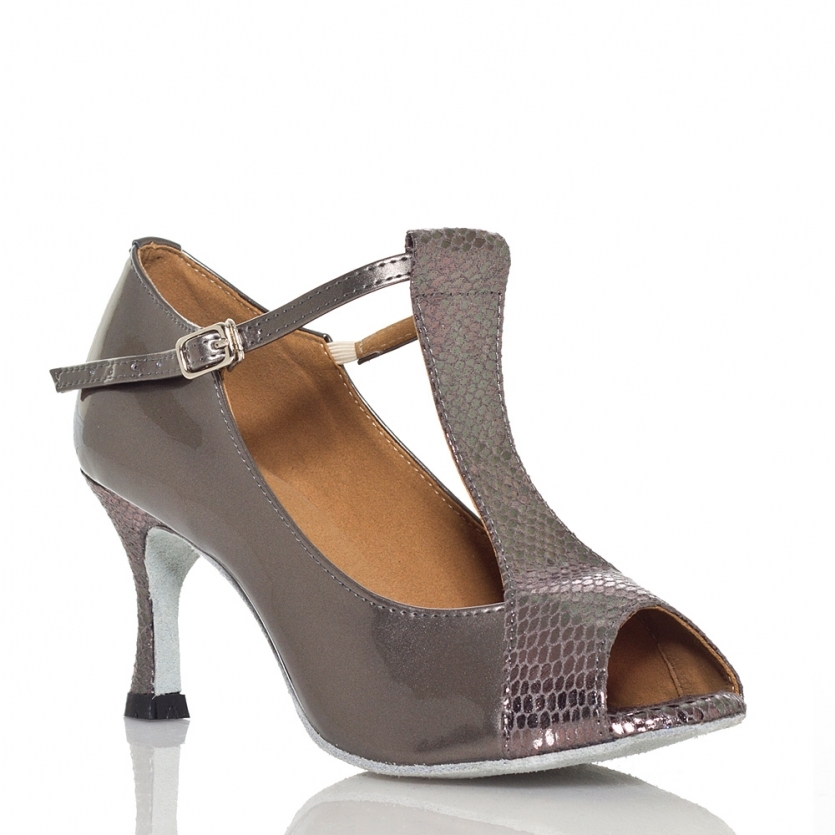 The arch strap is perhaps among the most common types of shoe straps for dance shoes and is known to provide extra security, since it wraps underneath the arch and back over the top of the foot. Many new dancers may not be accustomed to the look of the arch strap, but it is widely used in many different dance shoe styles for its added support and security.
The arch strap is perhaps among the most common types of shoe straps for dance shoes and is known to provide extra security, since it wraps underneath the arch and back over the top of the foot. Many new dancers may not be accustomed to the look of the arch strap, but it is widely used in many different dance shoe styles for its added support and security.- Arch strap:
- Wraps under the arch, then back over the top forming an X (often also referred to as X-strap)
- Offers added security with how it wraps around the entire foot
- Very versatile, since dancers are free to wrap the strap in any way–under the foot or even around the ankle
- Can also be cut to a shorter length to make a simple ankle strap
- T-strap:
- A classic look that offers a bit more of a “vintage” aesthetic
- Offers added security to a simple ankle strap
- Some dancers may prefer this over the arch strap if they don’t like the feeling of being “wrapped into the shoe” quite as much
- Ankle strap:
- The most basic form of shoe strap that is simpler and easier to adjust
- While a classic aesthetic look, some dancers prefer having the added security in other strap styles
Practice shoes or no?
- Practice shoes are lower-heeled alternatives for dancers to train and teach in.
 They are typically lace-up styles with a wider shaped heel, offering more comfort for longer durations of dancing.
They are typically lace-up styles with a wider shaped heel, offering more comfort for longer durations of dancing. - Not everyone prefers to use practice shoes, but they allow us to execute certain dance actions and techniques more easily.
- They’re a great way to preserve our feet and our nicer performance or competition shoes! We recommend regularly switching in and out of your practice shoes to make adjustments easier back and forth.
We recommend highly that all dancers note the pros and cons of the different dance shoe styles. Dance shoes are not fashion wear, but are equipment. Please consider what types of dance styles you are practicing and what your needs are when choosing the right type of ballroom shoe.
Please feel free to contact us if you have any questions regarding how to fit and choose a ballroom shoe! Our staff are all experienced ballroom dancers who want our customers to find the right dance shoes. Our goal is to help equip all dancers with the best tools possible in order to learn and enjoy ballroom dance.
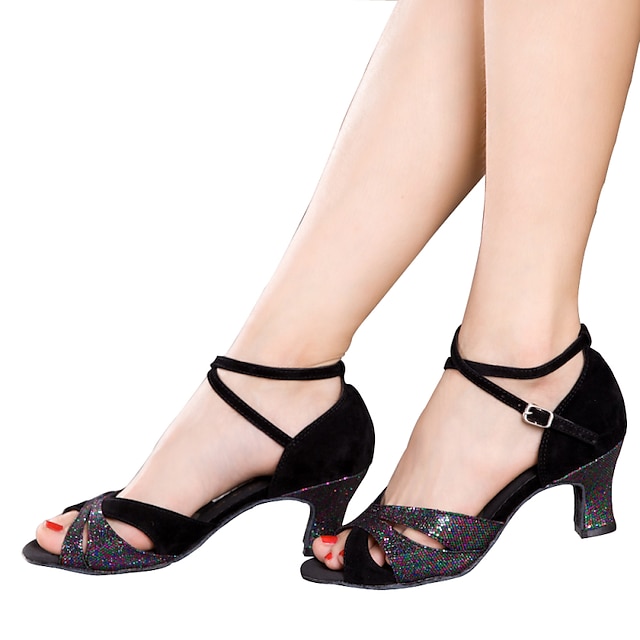
How Should Latin Dance Shoes Fit – Dancewear Tips
If you just became interested in Latin dance or have been in the game for a while, you need a quality pair of dance shoes that provide comfort and stability. You probably have been thinking about how should Latin dance shoes fit and stumbled across this article. Choosing the right shoes for Latin dance will allow you to dance comfortably longer and help you improve posture and technique.
How should Latin dance shoes fit? Latin dance shoes should fit tight around your feet but not painful. They need to be snug and comfortable around your feet. Latin dance shoes should provide you with an incredible balance by shifting you slightly forward on the ball of your feet while standing.
Latin dance shoes are designed to provide you with flexible movements while supporting the ankle, arch, and heel.
Why Should You Get Latin Dance Shoes
Simply put, dance shoes are made for dancing.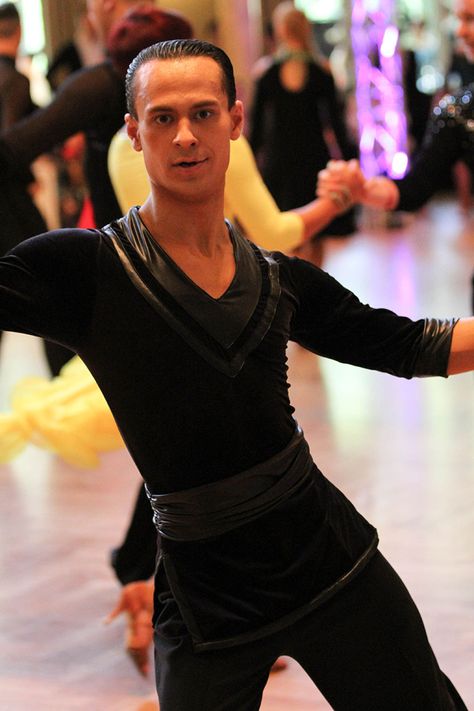 It doesn’t matter if you are a beginner, learning to dance socially only, or a professional; everyone should have a pair of good dance shoes in their closet.
It doesn’t matter if you are a beginner, learning to dance socially only, or a professional; everyone should have a pair of good dance shoes in their closet.
Dance shoes are like a piece of safety equipment because if the shoes are not tight and snug around your feet, you could injure yourself or your dance partner.
Latin dance shoes have a unique sole and heel shape that allows you to dance with confidence while being secure and safe. The heel is perfectly designed to place your weight over the proper part of your foot.
Regular street shoes have a rubber sole; whereas, dance shoes have a suede sole that allows friction and sliding without slippage.
Things To Look For In Latin Dance ShoesYour toes need to be at the edge of the shoe, and there should not be any space there. If there is a little bit of space, that means that the shoe is too big. If you are trying to curl your toe just to fit in your shoes, that means that the shoe is too small.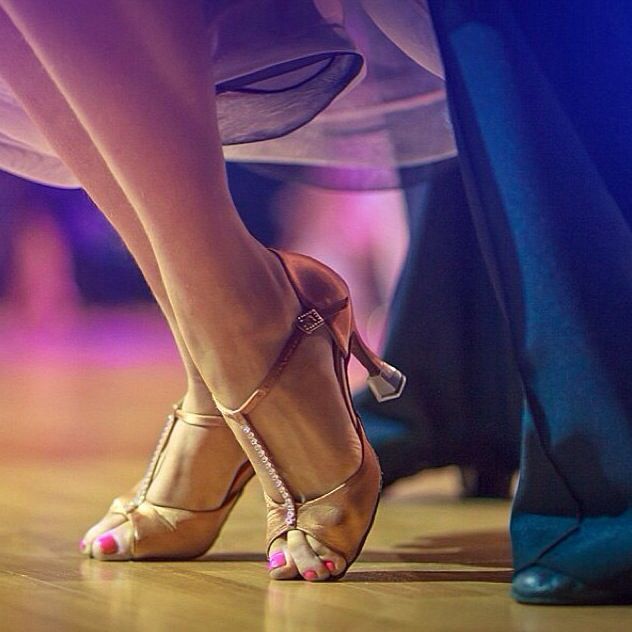
There shouldn’t be any room at the heel cup. It means that the heel cap should hug your heel nicely without leaving any space.
You need to look at dance shoes as a piece of safety equipment for dancing because if the shoes are too loose while dancing, you could hurt yourself.
The strap over toe box must be very tight. There shouldn’t be any gapping in between the toe box and foot. It should be very tight. If this area is loose or unstable, it can result in an injury.
If the shoes are too loose, you need to change the width or the size. It would be advisable to measure your feet before ordering the shoes online.
All You Need To Know About the Fit Of Dance Shoes
Heel Height and FitThe heel size and shape are essential when looking to purchase Latin dance shoes.
It would be best if you chose the heel height that you are the most comfortable with. If you wear high heels regularly, you should choose a higher heel if you feel comfortable. However, as I covered in the most recent article, “Best Latin Shoes for Beginners,” the heel height should not be higher than 2 inches if you are a beginner. You will be more comfortable with a lower heel, and you will have more control over your moves.
However, as I covered in the most recent article, “Best Latin Shoes for Beginners,” the heel height should not be higher than 2 inches if you are a beginner. You will be more comfortable with a lower heel, and you will have more control over your moves.
I prefer a lower heel because I am not comfortable with high heels, and I am also very tall, so I don’t like being much taller than my dance partners, haha. I have tried wearing high heels in the past, but I just end up not wearing those shoes because they are not comfortable. Lower heels can look stunning too!
You can choose stiletto heels in Latin shoes, but it is hard to keep balance in those although they look fantastic! I would recommend a heel similar to the Ballroom shoes, which opens up slightly at the end for better stability. These are called flared tip heels.
Also, you could purchase something called a heel protector. These are usually available for purchase from the manufacturer you bought the dance shoes from.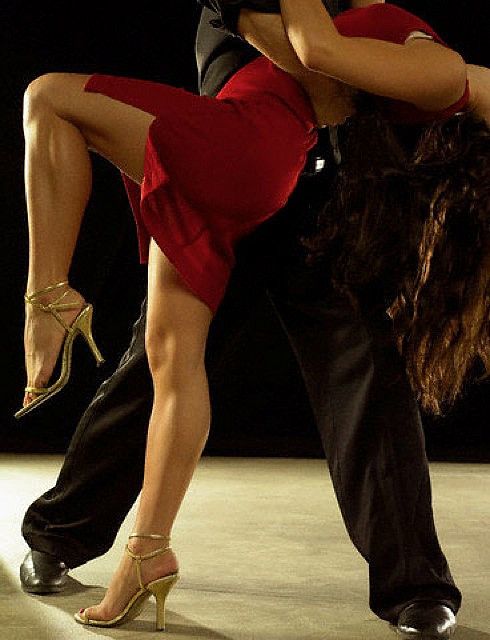 These heel protectors are made from suede usually and prolong the life of your heels.
These heel protectors are made from suede usually and prolong the life of your heels.
Quality And Style
The quality of your dance shoes matters a lot. There are two choices of fabric available for Latin dance shoes: leather and satin. Many ladies choose satin dance shoes because there are more choices in terms of color and style. However, the leather dance shoes will provide more extended wear and will stretch more.
The following features high-quality Latin dance shoes should have:
- Stability. Women’s dance shoes should have an anti-slip feature, and men’s shoes should have slip resistance for additional support and stability.
- Strength. Women dance should have heels and straps that provide strength and durability that you can rely on.
- Comfort. Comfort is a prerequisite for good dance shoes. Make sure to select shoe manufacturers that design shoes with half sizes, an array of heel heights, and cushioned insoles.

- Longevity. Latin dance shoes are put under a lot of pressure due to fast turns and spins, so they need to be durable for many years of dancing.
- Style. A great pair of Latin dance shoes are stylish and practical by giving you the confidence to make you feel your best on the dance floor.
In terms of the style, when it comes to the ladies’ Latin dance shoes, the shoes need to have an open toe with a wide variety of strap designs and colors.
Have you ever wondered why all those professional dancers wear nude color dance shoes? It is not because they don’t have good taste in style; they actually have great taste in fashion! It is because nude shoe color makes ladies’ legs longer and doesn’t bring attention to their feet.
Latin Dances Shoes With Different Strap Styles
T-strap styleT-strap-style Latin dance shoes are not ideal for someone who has high arches because they can prevent your range when pointing your foot. However, T-strap dance shoes are beneficial because the t-strap secures your foot more evenly to the shoe and takes some tension and tightness off the ankle. Many women swear by t-straps because they allow you to point your feet without the front of the shoe sliding forward.
However, T-strap dance shoes are beneficial because the t-strap secures your foot more evenly to the shoe and takes some tension and tightness off the ankle. Many women swear by t-straps because they allow you to point your feet without the front of the shoe sliding forward.
Here is an example of T-strap women Latin dance shoes on Amazon.
These shoes are an excellent choice because they have an adjustable strap attached ankle cross strap with a pin buckle.
Also, these shoes are very flexible, comfortable, and lightweight. Depending on your personal preference, they come in three colors (black, silver, and gold).
You will dance with a piece of mind knowing that your dance shoes will not wabble, slid, or slip. Just adjust the strap to your liking and enjoy dancing with confidence.
Ankle Strap Latin Dance ShoesHere is an example of ankle strap Latin dance shoes for women.
These shoes have easy-release buckles that help you with putting on and taking off the shoe effortlessly.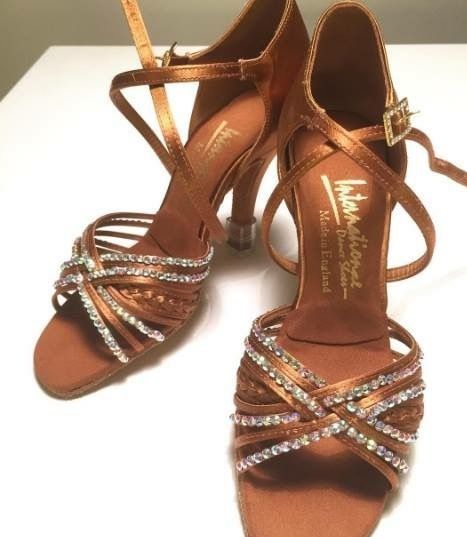 These are helpful if you are late for dance class or in a rush.
These are helpful if you are late for dance class or in a rush.
Ankle strap dance shoes connect nicely one side of the heel cup to the other. These kinds of straps are offering the least support. If you are going to choose these shoes, be sure to select ones that have wider ankle straps. Thin ankle straps can dig in your skin and put a lot of pressure on the front of your ankle.
It could be an issue for professional dancers. However, for us who are dancing socially only, these shoes are not the wrong choice, especially if you choose a wider ankle strap.
Strappy Vamp Latin Dance ShoesHere is an example of the strappy vamp Latin dance shoes for women. They are absolutely gorgeous and elegant.
These shoes are my favorite because they are so classy, beautiful, and very comfortable. They are perfect for dance lessons and also for going out. You can style them however you want because they are versatile.
Strappy vamp dance shoes are excellent for maximum stability and security.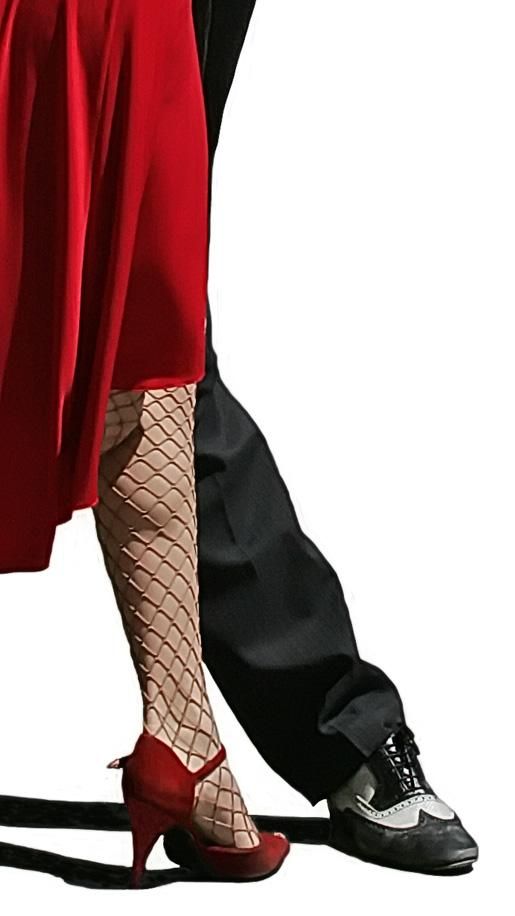 Your feet will feel fantastic and secure for great confidence and performance on the dance floor.
Your feet will feel fantastic and secure for great confidence and performance on the dance floor.
Those ladies who have an uneven toe length might find their toe popping out of the vamp strap. To solve this issue, you could insert a mesh between the straps. Also, if you purchase Capezio Women’s dance shoes, you will not experience this problem.
Under Arch Strap Latin Dance ShoesHere is excellent under arch strap Latin dance shoes for women.
The strap goes under the shoe (see the second picture). The quick-release buckle is convenient when you are in a rush or late for a dance lesson. I love these shoes because they are very flexible, lightweight, durable, and comfortable. Also, the anti-slip suede sole provides extra support and balance.
These shoes have high resistance and durability because they can band while dancing without damage.
Besides having all the good qualities that Latin dance shoes should have, they are also incredibly gorgeous and elegant.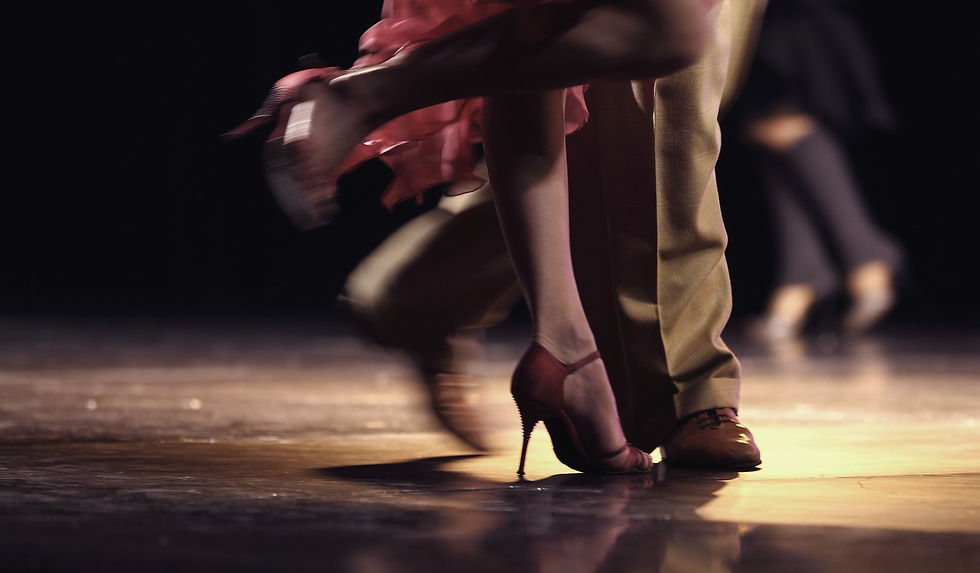
Under the arch strap, dance shoes are very supportive and stable, which straps your foot to the shoe’s arch. This type of shoe is perfect for beginners because they offer incredible support and stability. They are also ideal for those who feel wobbly in heels with a traditional ankle strap (aka me, lol).
PaddingSome Latin shoes have lots of padding, and some don’t. Many ladies love lots of padding because it is very soft. However, some of us don’t like lots of padding (like myself) because I can’t feel the floor well. I would suggest purchasing dance shoes with less padding.
If you are prone to blister and your feet are very sensitive, I suggest inserting gel padding. Gel pads are lightweight, thin, and can be washed. Many women feel that gel pads are the most comfortable and best solution for them.
There are lots of options for gel pads in terms of shape and thickness. Some gel pads have gel on the tip and the top, which allows you to feel the floor. On the other hand, the flared shape is ideal for wider feet. There are also gel pad shapes available for ladies who have narrower feet.
On the other hand, the flared shape is ideal for wider feet. There are also gel pad shapes available for ladies who have narrower feet.
The negative side of the gel pads is that they lock the moisture, leading to toenail fungus. Avoid wearing gel pads for a prolonged time.
What To Do If You Don’t Want To Invest In A Pair Of Dance Shoes Immediately
If you are dancing Latin and Ballroom dances and are just looking to get one pair of shoes, I would suggest purchasing Latin dance shoes because it is possible to dance Ballroom and Latin dance styles in Latin shoes rather than dancing both dance styles in Ballroom shoes.
If you are just starting to dance and don’t want to invest in pair of dance shoes, you could wear regular shoes with a smaller heel. Eventually, when you decide to purchase a pair of dance shoes, you will notice a tremendous difference in your spins, turns, and technique.
When I just started dancing, I was wearing regular street shoes. It was a huge mistake.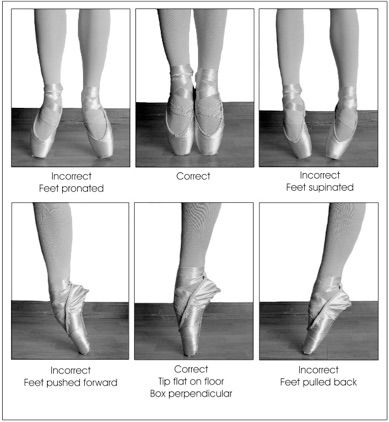 I even went once for the dance practice in running shoes. I don’t know what I was thinking, haha. I couldn’t spin or turn at all. If you do that, it will be a waste of your time and money.
I even went once for the dance practice in running shoes. I don’t know what I was thinking, haha. I couldn’t spin or turn at all. If you do that, it will be a waste of your time and money.
How should Men’s Latin Dance Shoes fit
The most common type of Latin dance shoes for men is the shoes with Cuban heels. It is a slightly risen heel, and the sole is slightly split to give flexibility. It is better when the shoe’s skin is softer because it almost feels like you are dancing barefoot.
If you are a man and looking to purchase only one pair of shoes, I would suggest buying Latin dance shoes with Cuban heels.
If you are new to Latin dance and are not entirely sure if you want to invest in Latin dance shoes, you could wear dress shoes without a rubber sole.
Here are some excellent ideas on dance shoes for men if you are not sure what to wear, “10 Best Men’s Dance Shoes For Salsa Dancing ”
How To Care For Latin Dance Shoes
If you want to preserve and extend your dance shoes’ life, you need to take good care of them.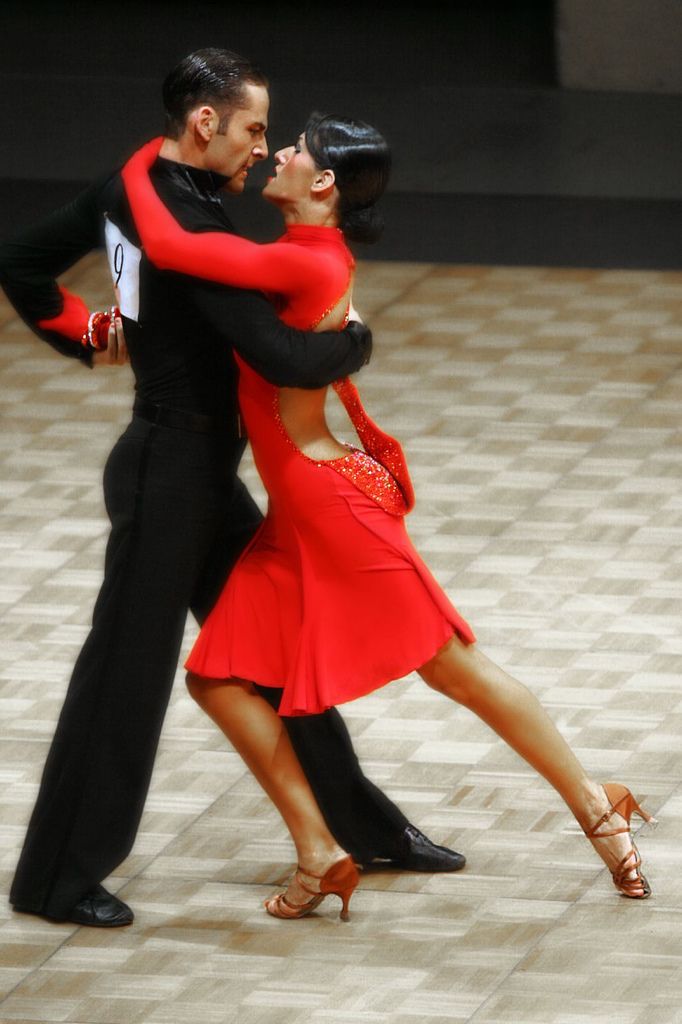 It is vital to take care of your dance shoes because they are an investment, as your dance classes are.
It is vital to take care of your dance shoes because they are an investment, as your dance classes are.
Dance shoes get dirty quickly during the practice because the dance floor has lots of dirt, dust, and debris. Dance shoes collect dust and floor wax easily, and it is not very simple to clean the dance shoes by drawing them into a washer. Actually, cleaning dance shoes require manual work.
As someone who learns Latin dance for social dancing purposes only, I take dance lessons only once a week, so I clean my shoes after each use. However, if you have dance lessons a few times a week, make a habit of quickly brushing your shoes with a damp paper towel and then gently tap them with a dry paper towel. Do not rub the fabric vigorously because it will leave a mark.
Additionally, to extend your dance shoes’ life, put them in a small shoe bag so they cannot get damaged.
Depending on how often you use your dance shoes, they should be cleaned once a week.
Additional Tip
If you practice any Latin dance style in the privacy of your home, make sure that the floor is very clean from dust and dirt. A clean floor serves a dual purpose: protection for your shoes and the floor. For example, if a small piece of debris is stuck in your shoe and you drag it around the floor, you could damage the shoe and the floor.
A clean floor serves a dual purpose: protection for your shoes and the floor. For example, if a small piece of debris is stuck in your shoe and you drag it around the floor, you could damage the shoe and the floor.
How To Take Care Of Suede Sole
Latin dance shoes with suede sole are very delicate and require much more care if you want them to last and look good for a very long time.
You should brash your dance shoes with a suede brush after each use. Use gentle movements to get the dirt and dust off the dance shoes.
Also, you can use a touch of caster or vitamin E oil on the bottom of the shoe. It will help preserve the shoe sole much longer.
However, even if you take the best care of your shoes, the sole will need to be replaced eventually. When that happens, find a good repair shop and repair your suede sole if it is not too damaged. If the suede sole is too damaged, you should look for a new pair of dance shoes.
What To Use To Clean Dance Shoes- A suede brush is essential to ensure the longevity of your sole suede shoes.
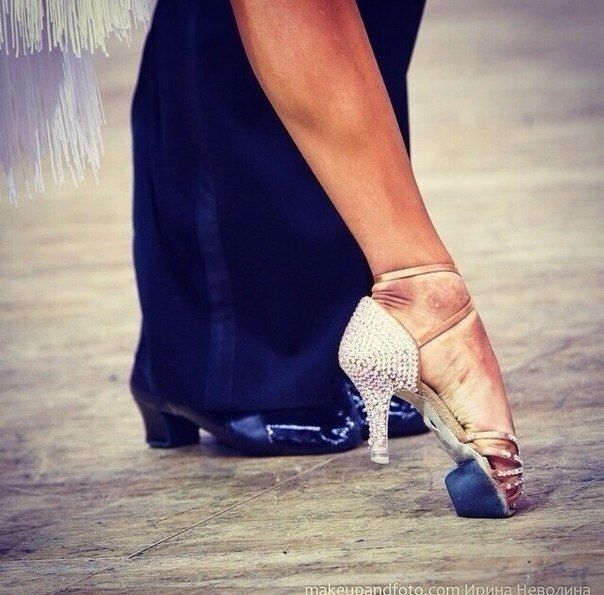
- Caster and Vitamin E oils can protect the suede sole. Also, a shoe oil will keep your leather dance shoes moisturized and free from damages.
- Have a water spray bottle readily available to clean your shoes immediately when you spot a speck of dirt before it becomes dry and hard to clean.
- A shoe polish cloth will keep your dance shoes clean and looking spotless.
How to choose dance shoes: features and recommendations
How to choose dance shoes
Choosing dance shoes is not as easy as choosing casual shoes. Therefore, before buying, questions usually arise: what guides you when choosing the most comfortable dance shoes? Where to buy dance shoes? Is it necessary to choose it for each type of dance separately or are there universal options? You can find the answer to these and similar questions in this article.
Shoes for different types of dance
Sports ballroom dancing
Shoes for Latin American and European dances are very different.
Children up to 11 years old dance in universal shoes. Rating shoes for boys or rating shoes for girls are versatile dance shoes for training and performance. We have a huge selection of these dance shoes in our store.
If you need to buy shoes for sports ballroom dancing, you need to know what program you are going to dance. In the Latin American program, the partner uses a high heel (about 4 cm), girls usually use shoes for dancing with heels from 5 to 9cm, the shoes are tightly held on the legs thanks to the straps.
For European dances (standard), shoes with a small heel (about 2 cm) are used for the partner, and pumps for the partner. The heels of the ladies can be as high as in Latin. As materials, both synthetic and natural high-quality materials are used, emphasizing the expensive and elegant image of a dancer on the floor, but at the same time providing comfort of movement.
Ballet
Pointe shoes are the classic ballet shoes. Pointe shoes contain a rigid glass inside, which helps to keep balance during the dance, when the performer has to stand on his fingers. Pointe shoes are selected individually for each dancer and choosing them correctly is not an easy task. Pointe shoes are a type of dance shoe that is used only in ballet and nowhere else.
Pointe shoes are selected individually for each dancer and choosing them correctly is not an easy task. Pointe shoes are a type of dance shoe that is used only in ballet and nowhere else.
Ballet shoes are also used during the training process. Ballet flats are the most "universal" type of dance shoes that are suitable for both ballet and just stretching, choreography and almost any dance style as training shoes.
Ballerinas are usually white, pink, nude and black. Men usually choose black, girls can afford any, but still white and flesh are the most popular. Ballet shoes as dance shoes are one of the most common options. After them, you can already move on to more specialized shoes for the chosen dance direction.
Jazz
Jazz shoes can also be used for other types of dance (hip-hop, aerobics, rock and roll). The heel does not matter - it can be both high and low. Open sandals and soft lace-up boots are also suitable.
Dance shoes must have a split sole so that the foot can easily perform any movement. Sometimes there is also a rubber sole - it provides additional grip on the surface.
Sometimes there is also a rubber sole - it provides additional grip on the surface.
Oriental dances
This type is usually characterized by barefoot performance. However, you can buy Czechs or ballet flats. They are often supplemented with decorative elements (they apply a pattern, add beads or rhinestones).
Rhythmic gymnastics
In our store you can buy shoes for rhythmic gymnastics - these are half-toes. In fact, this is half a ballet flat and an elastic band that wraps around the heel. These are professional footwear for athletes, which you can also purchase in our Komilfo store.
What should you keep in mind when buying dance shoes?
- Choose a dance shoe that is more flexible and soft at the time of purchase - this is essential for many dance moves.
- Do not choose shoes that are too big. Remember that shoes can stretch after a certain time. Therefore, after a few weeks, they can become too loose and fall off the leg, and this can lead to sad consequences.
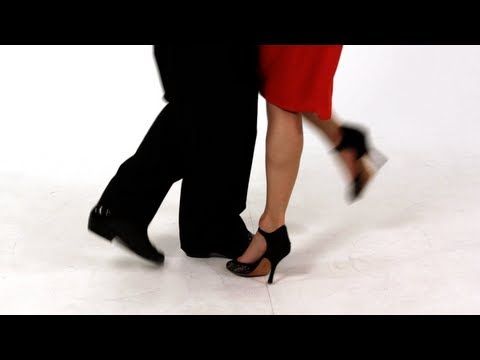
- The foot may not be very comfortable in new shoes. Don't compare the feel to your old shoes or regular shoes. The task of dance shoes is to provide comfort and safety while dancing. The most comfortable materials are genuine leather and suede (nubuck).
- In the case when the dance shoes are suede or leather, do not forget to take care of them in time. Do not forget to buy special care products. So your dance shoes will last much longer.
- Girls should buy strappy dance shoes. Thanks to them, the shoes will be securely fixed. It is important that the strap is long enough, otherwise it will be uncomfortable and cut into the skin.
- In order for the shoes not to slip too much on the parquet, do not forget to use a special brush for shoes, which raises the pile on the sole of the shoes. This ensures optimal glide and floor feel. You can also buy professional brushes for shoes in our online store.
- Do not forget that dance shoes wear out much faster than street shoes.
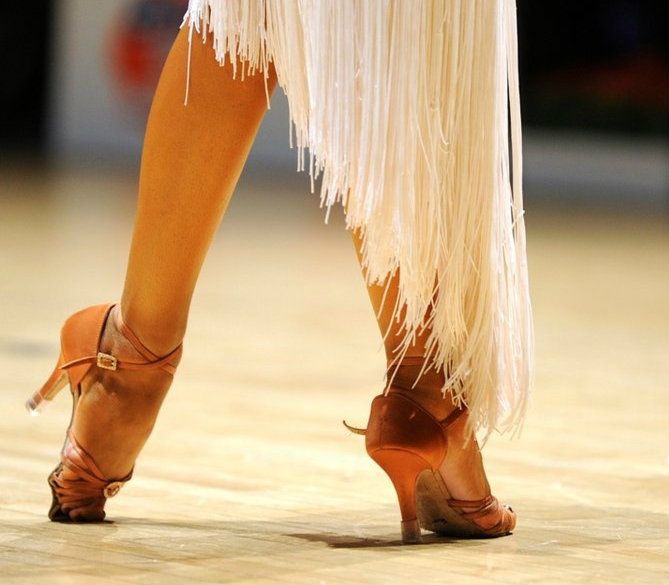 Therefore, it should be constantly changed to avoid injury.
Therefore, it should be constantly changed to avoid injury.
How to choose the right size of dance shoes when purchasing them in the Komilfo online store?
When ordering shoes through our online store, you need to focus on your usual size. But we must not forget that too large or vice versa, small, the size can lead to falls, damage or injury during dancing. In addition, each manufacturer's size range may differ from the one you are used to. Therefore, consultation in our dance online store "Komilfo" is the best choice.
Komilfo shop cooperates with a large number of brands and suppliers of shoes for dancing or gymnastics. Among them: Galex, Aida, BD dance, Dancemaster, Odeon, Grishko. Our online store gives you the opportunity to purchase goods from many well-known and recognized brands that produce only high-quality shoes and offer a huge variety of materials from natural leather to natural or artificial lacquer, suede, nubuck, etc.
By purchasing shoes from us, you not only buy goods, but also get an excellent offer in relation to cost to quality, as well as positive emotions from the chosen dance shoes.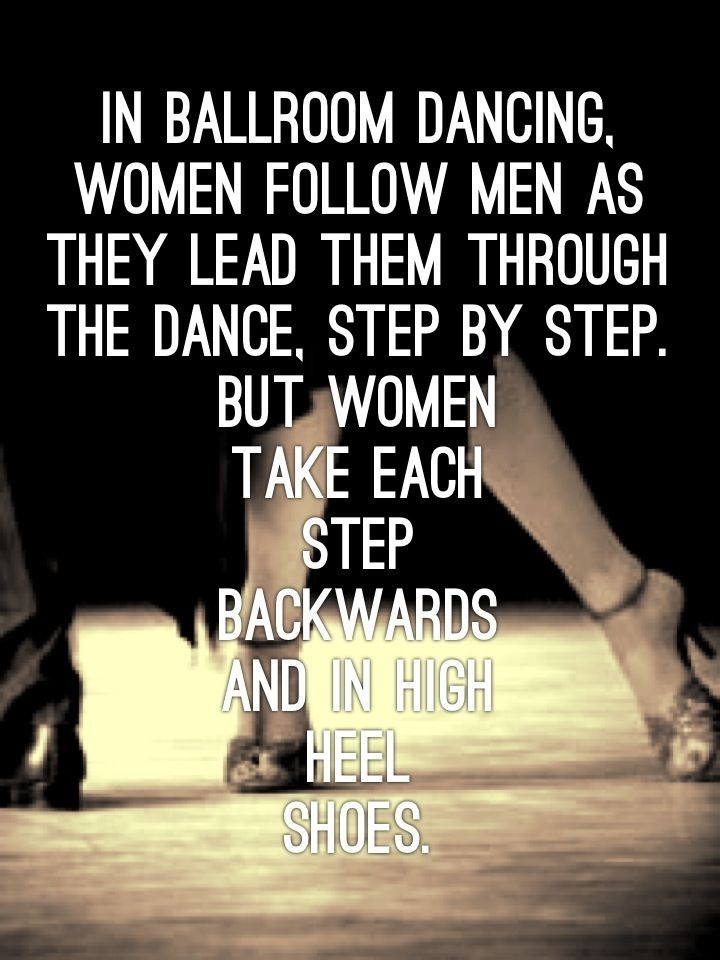 You will definitely want to use our services again!
You will definitely want to use our services again!
How to choose shoes for ballroom dancing?
Ballroom dancing, like any other kind of art, requires a creative approach and a flight of fancy from a person, however, it is not by chance that they are called sports ballroom dancing. Such dances involve numerous trainings and incessant work on oneself, where, as a result, the dancer will certainly participate in competitions, contests and tournaments.
If you are involved in ballroom dancing, then you know firsthand that only with intensive training can you achieve your goals and results. During training, smooth movements and pas are born, as well as stretching and posture are formed. In this case, the dancer must correctly control his body and foot. Only professional dance shoes ensure the proper functioning of the feet.
Dance shoes are selected individually for each dancer, while neither health nor dance technique should suffer.
Many beginner dancers often ask the question: why do I need special shoes to dance, what will happen if I dance in ordinary shoes?
Ordinary shoes have rather thick soles, and the shoes themselves are made of fairly dense leather. In such shoes it will be very difficult to pull the toe correctly, and the movements will be performed incorrectly. Special dance shoes are made of very soft and thin leather or satin-type fabric, and the sole is very flexible, so the movements in such shoes look very smooth and graceful. Dance shoes fit snugly around the foot and almost repeat the shape of your feet.
In such shoes it will be very difficult to pull the toe correctly, and the movements will be performed incorrectly. Special dance shoes are made of very soft and thin leather or satin-type fabric, and the sole is very flexible, so the movements in such shoes look very smooth and graceful. Dance shoes fit snugly around the foot and almost repeat the shape of your feet.
To choose the right shoes for ballroom dancing, you need to consider the main types of shoes:
-
Rating shoesThese are children's shoes for beginner dancers. For girls, these are shoes with wide heels, the maximum height of which is 3-3.5 cm, with a closed heel and an open toe. For boys, boots with a heel height of 2-2.5 cm.
Ranked shoes cannot have any decorations. Their young dancers will be able to afford after moving to an older category. But the color can be different: white, black, tan, flesh, gold, silver.
Since a child's foot tends to grow very quickly, it is recommended to buy shoes for a child with a small margin (no more than half the size.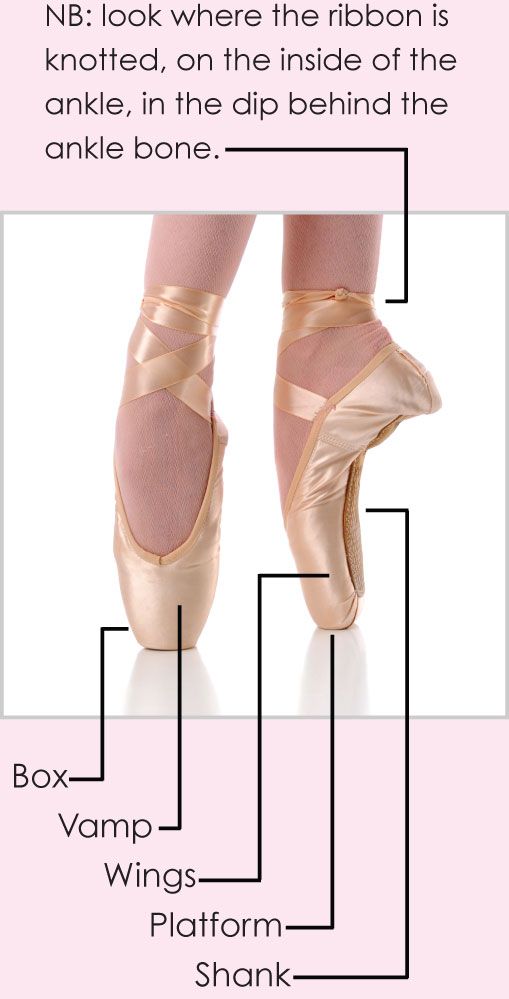 ) If the shoes are very large, then there is a risk of injury, and it will not be possible to dance in such shoes comfortable. The child will constantly cling to the floor with his toe, and this will lead to inaccurate dance movements.
) If the shoes are very large, then there is a risk of injury, and it will not be possible to dance in such shoes comfortable. The child will constantly cling to the floor with his toe, and this will lead to inaccurate dance movements.
For young dance lovers, one pair of shoes will be enough for the first time.
2.
Shoes for Latin dancesFor women:
To dance latin, you will need special sandals with a closed heel and open toes, with a sufficiently long strap and a heel height of 5, 7, 8 and 10 cm. It is better to fasten the strap under foot, and not on the ankle, this is a more comfortable and safe option. In order for the movements to be free, and all dance steps to be performed as correctly as possible, the arch support of such shoes must be flexible.
As for the choice of heel height, it is worth noting that for each dancer it is selected individually. Someone and on a hairpin in 10 cm. feels quite comfortable, and for some, even 5 cm is quite enough.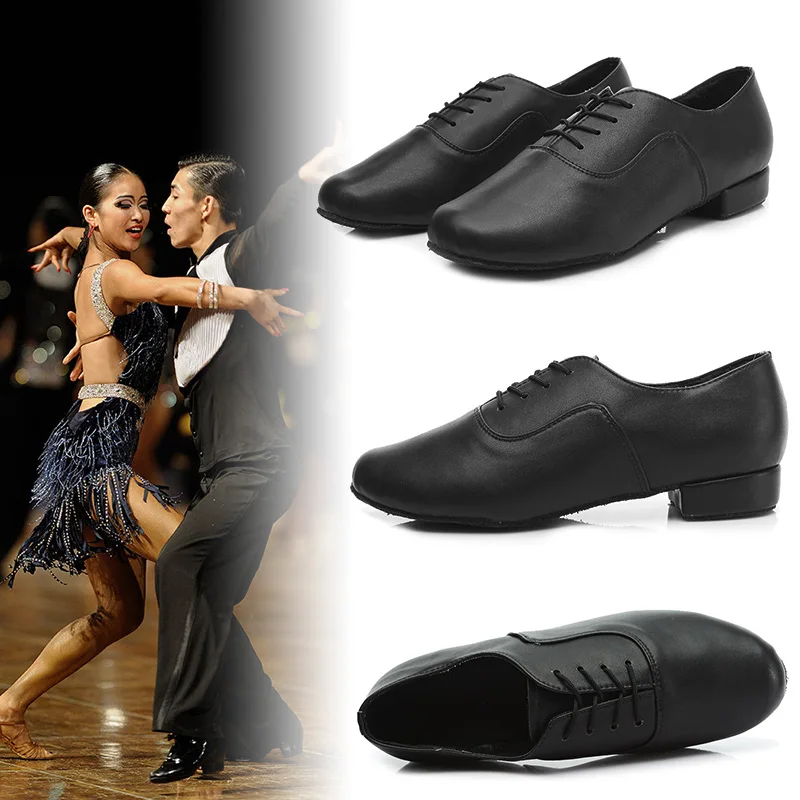 It all depends on the structure of your figure and the shape of the foot. But, all the same, for beginner dancers, in order not to experience unnecessary stress on their legs, it is recommended to choose a model with a lower heel.
It all depends on the structure of your figure and the shape of the foot. But, all the same, for beginner dancers, in order not to experience unnecessary stress on their legs, it is recommended to choose a model with a lower heel.
For men:
Men's boots with a 3.5 - 4 cm heel. Just like in the women's models for La, a soft and flexible arch support is required for the correct position of the foot.
3. Shoes for the European program
Women:
Closed shoes, usually with a pointed toe and a strap that fixes the foot, with a heel height of 5 to 7 cm. – 3 lessons, when the shoes bought for a size larger will stretch, and become even more free, will begin to cause discomfort during movements, and even fly off.
Men's:
The height of the heel of men's boots, for the standard program is lower than in Latin, 2-2.5 cm, and the instep is longer.
When choosing shoes for dancing, pay attention to the comfort of the heel. If, while trying on shoes, it is inconvenient for you to stand or move in heels, then you should try on other models. You can't dance in these shoes.
If, while trying on shoes, it is inconvenient for you to stand or move in heels, then you should try on other models. You can't dance in these shoes.
How to care for dance shoes:
In order for dance shoes to serve you for a long time and retain their appearance as much as possible, they must be properly looked after. After training, the shoes must be dried using crumpled paper and placing it inside. You can also purchase a special form - stretching for shoes. This device is now sold in many stores. Always dry your dance shoes at room temperature. Try to avoid artificial heat sources. From high temperatures, shoes can become deformed and it will become uncomfortable to dance in it, and improperly dried shoes will fail much faster.
Dirt that has appeared on shoes must be cleaned with products specially designed for this purpose. You can buy them in almost any store. When using shoe protectors, be sure to ask what materials they are used for shoes.
When caring for your shoes, don't forget to pay attention to their soles as well.


